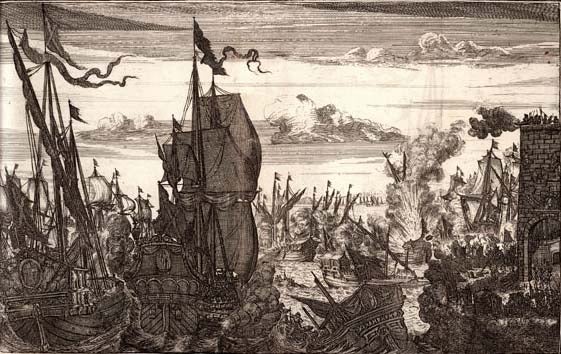Thanks to the Captain Morgan rum that many people enjoy, the name Captain Morgan is probably familiar to you. Captain Morgan himself, the rum face mainly known as the cunning sailor and British privateer, spread his fame due to his bravery and cunning. Sir Henry Morgan sacked towns and villages whenever he wanted and commanded the respect of those around him.
About Henry Morgan
Not much is known of Henry Morgan’s early life, although it is believed that 1635 was probably his year of birth, and that he was born in Abergavenny, Wales or Llanrhymny. Henry Morgan, thought to be that of Robert Morgan, a local squire, has two main stories explaining his arrival in the New World.
The former explains that he traveled to Barbados as a retired servant and later merged with the excursion of Admiral William Penn and General Robert Venables in 1655 to get away from his service. The second relates how Henry Morgan was recruited in 1654 by the Venables-Penn excursion to Plymouth.
All the same, Morgan appears to have participated in the failed trial to defeat Hispaniola and the resulting attack on Jamaica. Later, after he was elected to stay in Jamaica, his uncle Edward Morgan joined him. Edward Morgan was appointed lieutenant governor of the island in 1660 after the restoration of King Charles II.
Later that year, Henry Morgan married his cousin Mary Elizabeth, his uncle’s eldest daughter, and began sailing in the buccaneer fleets that the English employed to raid Spanish colonies. In this newly acquired position, he served as captain in Christopher Myngs’ fleet from 1662 to 1663.
Morgan raided and wreaked havoc on nearby Spanish towns and ships until 1665, when he finished and returned to Port Royal in Jamaica. At this time, Thomas Modyford, Jamaica’s new governor, was initially reluctant to allow racing to continue in the region. However, after banning it for less than a month, he came to realize that the island’s economy depended on the crown’s share of the pirate’s loot.
Additionally, Modyford was captivated by the cargo held by Morgan and other privateer captains, prompting him to signal to the government that Central America was the appropriate location for a raid on the Spanish East Indies.

It is strongly suggested that in 1666 Morgan was chosen to manage the Port Royal militia and was further responsible for the defense of Jamaica. Additionally, he oversaw the construction of Port Charles and purchased its original Jamaican Plantation.
The peace treaty
While Morgan was busy attacking Latin America in 1670, Spain and England signed the Treaty of Madrid which meant a certified peace between the two nations of America and was to end all conflict in the region . The fact that Morgan was plunder The capital of Latin America caused problems for the English crown and enraged the Spaniards.
There were rumors that the Spanish were planning to break off the treaty and resume the war to escalate the problem. By the time Morgan returned to Port Royal in 1972 things were already hot. To tempt and appease the Spanish, Charles II and the English government ordered Morgan’s arrest with limited choice.
Unfortunately, he didn’t have Modyford to defend him as he was removed from his role as governor and later detained. Later, Morgan was left to roam the streets of London freely and was even asked to write a letter to the King explaining his views on how to strengthen Jamaica’s defences.
Troubles in the Caribbean soon reached King Charles II. He knew that these troubles in the Caribbean would have an effect on the very lucrative sugar trade, and so he enlisted the help of the famous Captain Henry Morgan.
Therefore, many people praised him as a hero and adored him entirely. In November 1674, Henry Morgan was knighted serve as the region’s lieutenant governor before being sent back to Jamaica.

